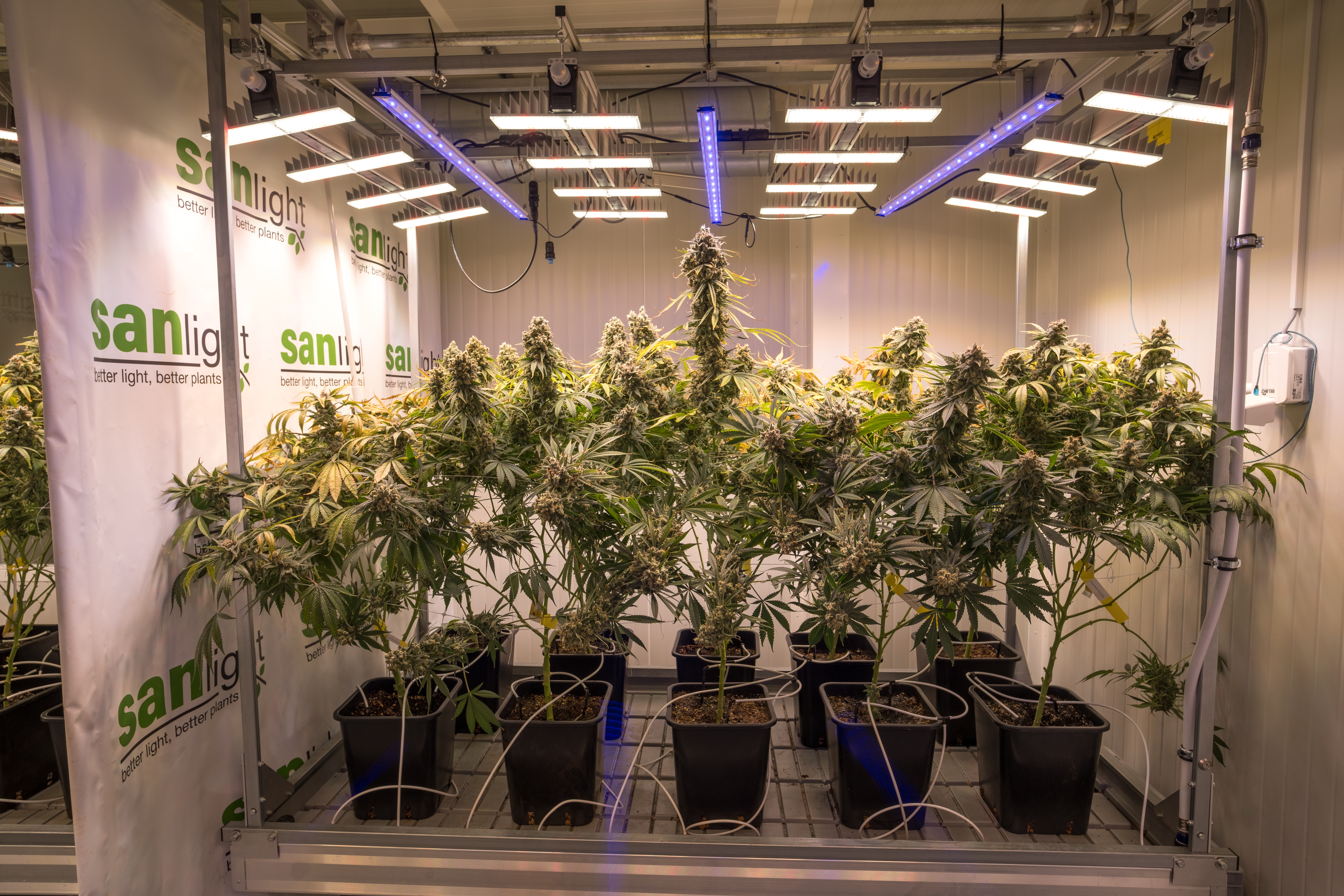
Influence of UV Light on Cannabis – Interim Study
Executive Summary SANlight has conducted an interim trial to investigate whether supplemental UV lighting can enhance the yield and quality of cannabis. The study focused
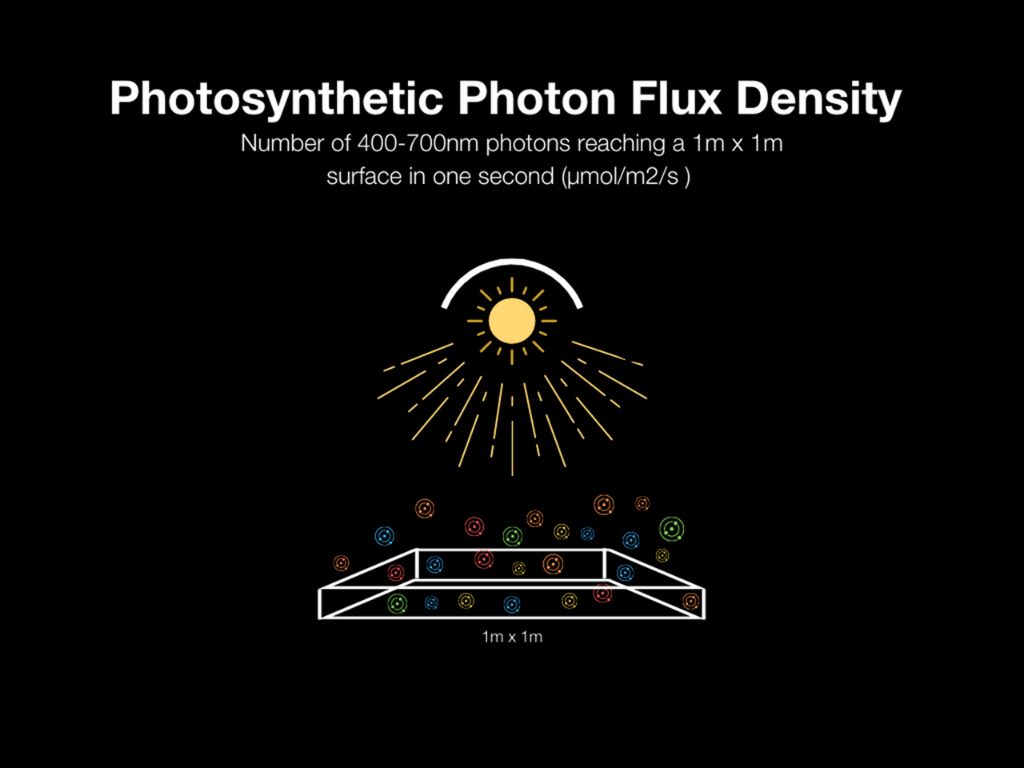
When it comes to lighting, there are some terms you will be confronted by trying to find the best lighting for horticultural setups. This paper is about define and describe the most important ones: PAR, PPF, PPFD and DLI. Besides these terms the paper also describes why it is important to use the extended versions of them and why the position of the light fixture and secondary optics (lenses) are supporting the idea of an efficient setup with minimum losses.
The three letters of PAR stand for Photosynthetic Active Radiation. It simply describes the range of light wavelengths which contributes to photosynthesis. PAR range starts at 400nm (deep blue) and reach up to 700nm and therefor it is including almost all visible colors which are emitted by the sun. A green plant is absorbing light from 400nm (deep blue) up to 700nm (deep red) and uses the light energy to drive photosynthesis.
There are other processes in a plant also driven by light besides photosynthesis. For example, the morphological appearance from plants is influenced by different wavelengths outside the PAR range. The so-called Emerson Enhancement Effect describes that the interaction between light with 660nm and 730nm is supporting photosynthesis more effective than just the sum of both. On the lower end of the PAR range where UV-light is located, certain effects on plants behavior are visible as well. This leads to the need of an extended range of the PAR range, which is called PARe or ePAR between 680nm and 750nm.
As plants “see” light differently than the human eye, it is useless to measure light with the metrics for humans in Lumen or Lux. This is why light output from a light source for horticultural purposes is measured and described in PPF. PPF is the abbreviation of Photosynthetic active Photon Flux. PPF describes the total amount of light particles (photons) within the PAR range emitted from a light source. The unit of PPF is µmol/second. Within PPF all colors are weighted the same, which means that a blue photon is weighted the same as a green one or a red one. This important figure tells us the total amount of plant usable light emission of a light source. It helps us to compare different light sources. Like the PAR range also PPF has an extended form, the so called PPFe or ePPF. Be aware that PPF nor ePPF tell us how many photons are reaching the plant canopy.
By dividing PPF with the lighted area you will end up with the PPFD. PPFD is the short form of Photosynthetic active Photon Flux Density.
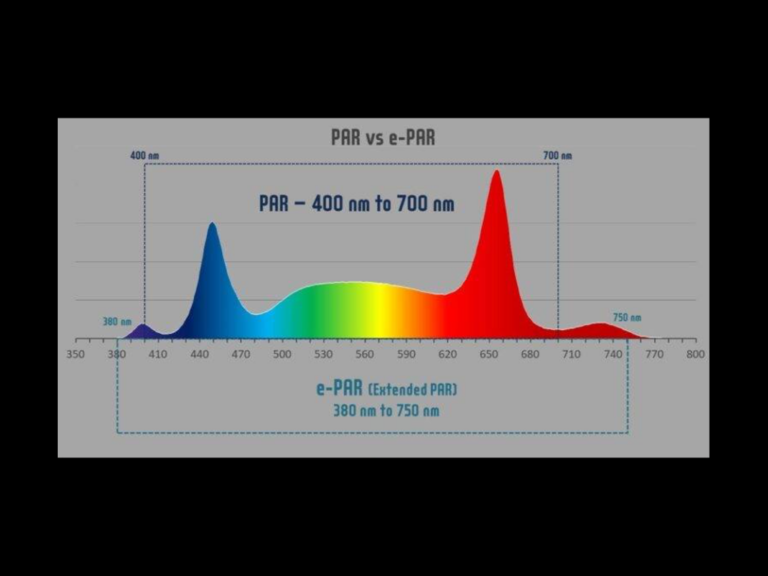
Example: A light source is emitting 1000µmol/s and we hang it into a one by one meter grow tent. We will have 1000µmol/square meter/second, at least in theory. In practical use you will end up with lower values because it is physically not possible to direct all the light to this exact square meter below the fixture. A not neglectable part of the emitted light is lost to sidewalls from your grow tent. To minimize this loss the right distance between light source and canopy is very important. In addition, the usage of secondary optics (lenses) will support by directing the photons to your target area. Both result in better PPFD values. For sure also for PPFD we have an extended version called PPFDe or ePPFD.
The PPFD or ePPFD is the most important value because it tells you how many photons are reaching your plant. These photons are driving photosynthesis.
More PPFD = More light at your plant = More photosynthesis = More yield.
Many years ago, a US scientist – Dr. Keith. J. McCree – measured the photosynthetic response to different wavelength at 22 different species. In one example he measured the CO2 uptake from plant leaves under blue light. He did the same with all other colors within PAR range. By overlaying all his results, he recognized the so-called quantum efficiency for plants. This curve (see below) describes how efficient photons with a certain color contributes to photosynthesis. If you look at this curve you will see that for example a red photon drives photosynthesis better as a green one

Imagine you have a light source with a PPF of 1.000µmol/s and a radiation angle of exactly 90°. If you hang this fixture 50cm above an area it lights up exactly one square meter. All your photons are reaching the ground. With our knowledge about PPFD we know that PPFD is the result from dividing the PPF by the lighted area: 1.000µmol/s divided by one square meter equals a PPFD of 1.000µmol/m2/s.
All this negatively affects the life of the LED. Therefore, it is very important to protect the LED from these influences in the best possible way. Poorly protected leds rarely reach the stated lifetimes in practice. The picture below shows a part of a LED light which has been used for more than one year in rough indoor conditions. Sulfur was regularly evaporated to prevent fungal diseases. On closer inspection, the oxidation of the reflector (black spots) can be seen on the LED. The light output has reduced by 25%.
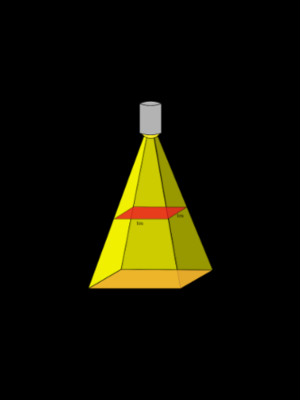
While PPFD gives us an idea of how much light reaches my plants per second, the Daily Light Integral (DLI) tells us how many light is available per day. It describes the quantity of photons which are reaching your canopy per day. If you know your PPFD it is easy to calculate:
Your PPFD times 3600 times the duration of your day in hours. As you will end up with pretty big numbers you need to divide the result by 1.000.000 to end up with the DLI which is given as mol/day.


DLI is a great measure to evaluate different indoor grows but very important when it comes to supplemental light in greenhouses. Of course it becomes trickier here to calculate due to seasonal and other environmental factors.

Executive Summary SANlight has conducted an interim trial to investigate whether supplemental UV lighting can enhance the yield and quality of cannabis. The study focused
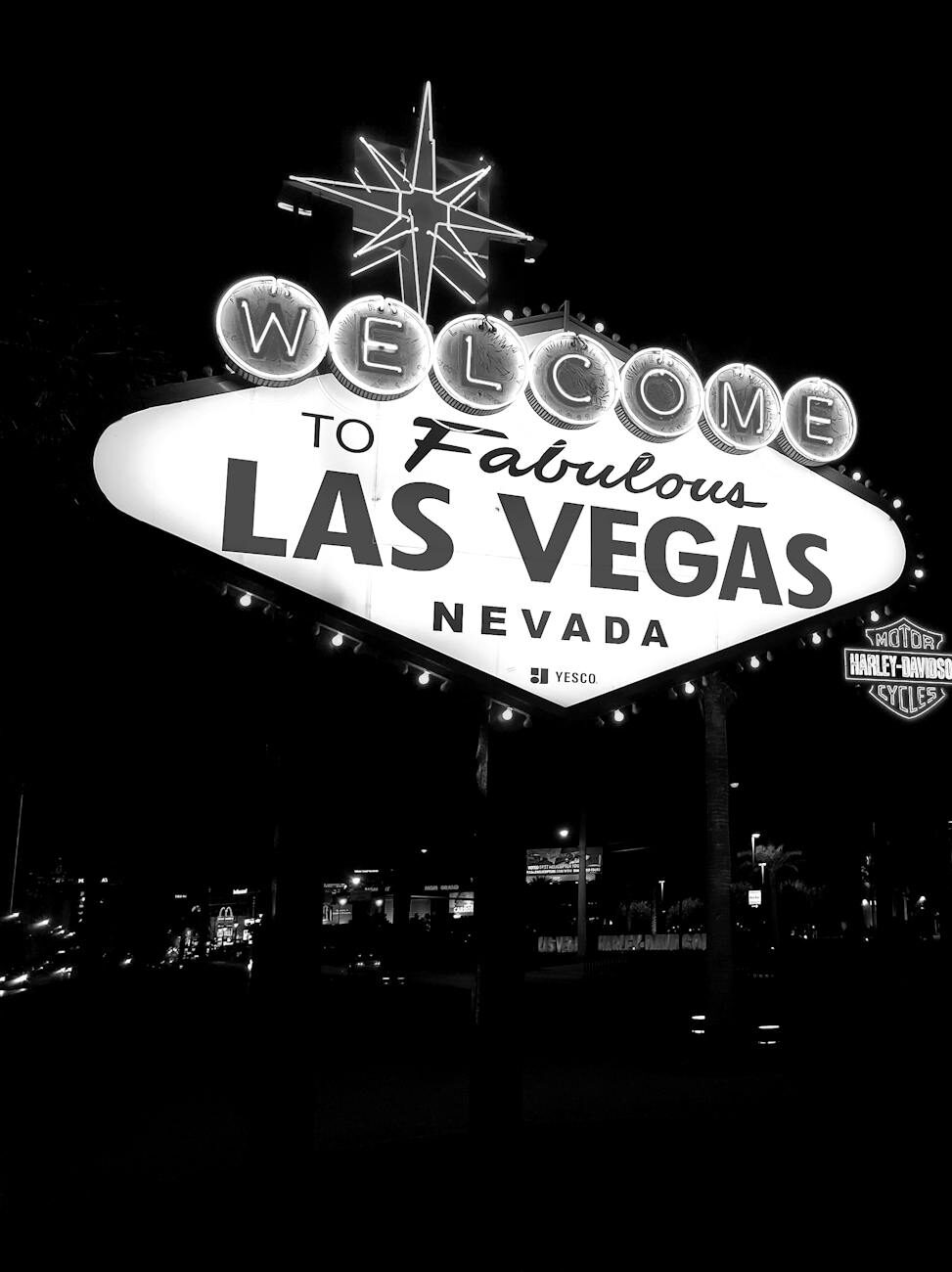
We came, we saw, we lit it up – MJBizCon 2024 was an absolute blast, and we couldn’t be prouder to have been there as
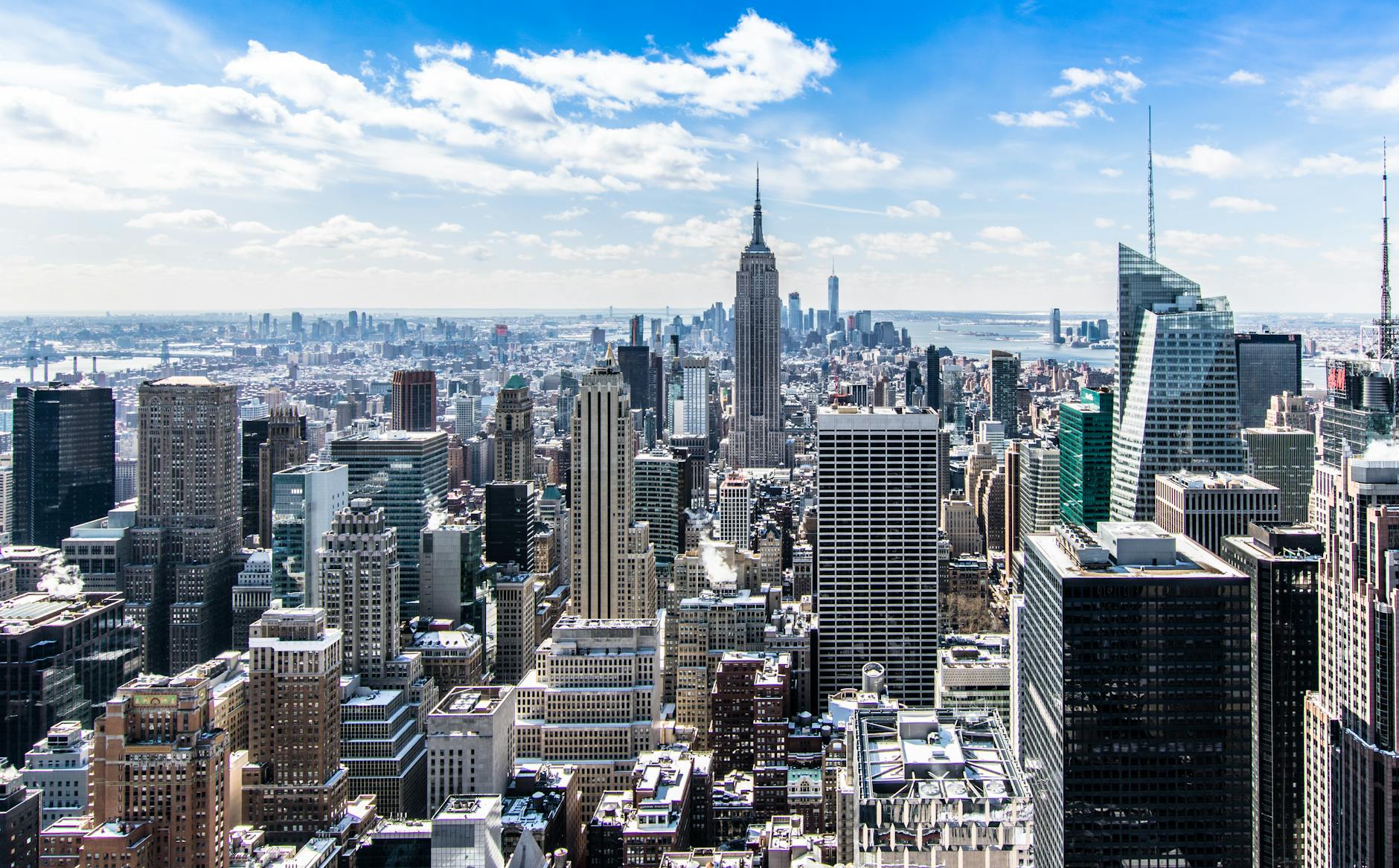
In a radiant whirlwind of vibrant energy and strategic partnerships, we, SANlight, the pioneering creators of LED grow lights, embarked on an electrifying journey to
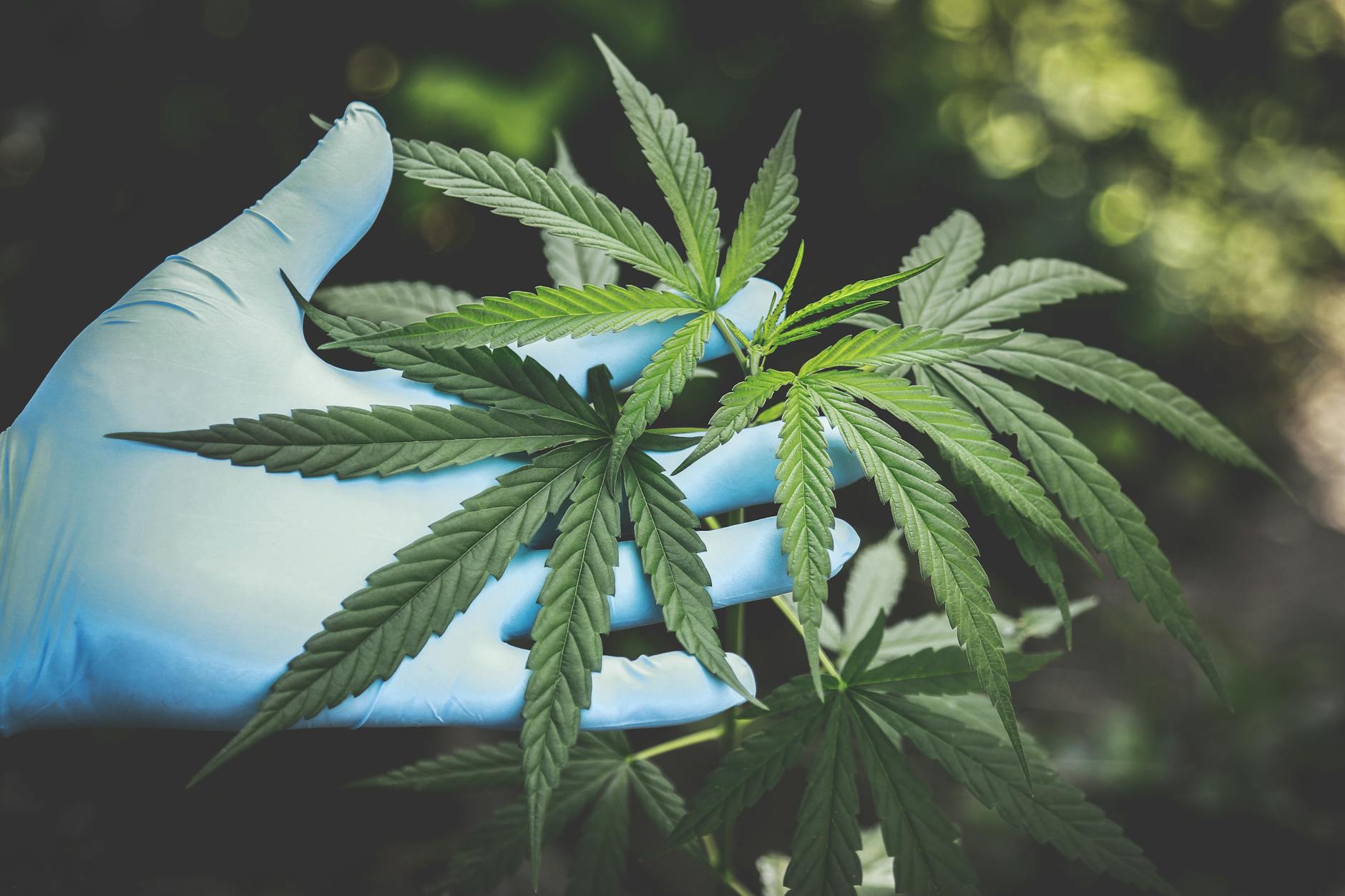
Regarding efficiency in an indoor grow environment, the power consumption of the HVAC system and the Grow Lights are the biggest energy consumption factors. In

© Copyright [year] SANlight Americas LLC | Terms and Conditions | Privacy Policy